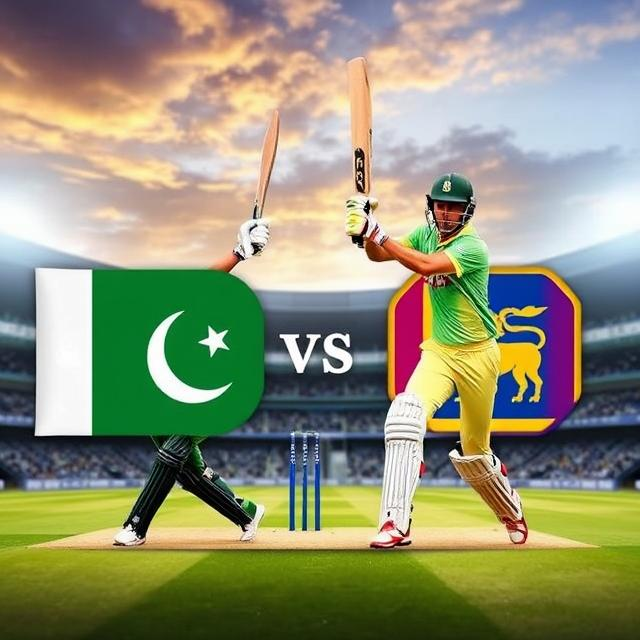Cricket vs. Pakistan: A Deep Dive into the Sporting Rivalry

Cricket vs. Pakistan: A Deep Dive into the Sporting Rivalry
The cricketing rivalry between India and Pakistan is one of the most intense and captivating in the world. Beyond the boundary lines, it’s a clash of cultures, histories, and dreams, fueling fervent passions on both sides. This article delves into the heart of this rivalry, exploring its historical context, significant matches, and enduring impact.
From the very first encounters, the games have often transcended the realm of sport, becoming powerful reflections of the broader political and social landscapes that shape the region.
Historical Roots
The historical context is crucial to understanding the intensity of the rivalry. The close proximity, shared history, and sometimes fraught political relationship have imbued the matches with a unique significance. The initial encounters were marked by the nascent stages of international cricket, where both nations were vying for recognition on the global stage.
Tracing the evolution of this cricketing rivalry reveals a tapestry of exhilarating wins, heartbreaking losses, and a shared passion for the sport. This article will take you through the captivating journey, highlighting key moments and exploring the motivations driving both nations’ players and fans.
The political climate often spills over into the arena, creating a unique tension that fans find both thrilling and unsettling. How have these external factors influenced the way the teams approach each other, and how have these matches impacted the emotional landscape of the respective nations?
The matches are more than just sporting events – they are a barometer of the evolving dynamics between India and Pakistan. The emotions, the cheers, the criticisms, and the celebrations are all reflections of a shared, often complex relationship.
Turning Points and Iconic Matches
Certain matches stand out in the annals of cricketing history, etched in the memories of both nations. These turning points shaped the narrative of the rivalry, leaving an indelible mark on the hearts of millions. One such match would undoubtedly be the 1992 World Cup final, where the emotional stakes were sky-high. Did the outcome reflect the broader political tensions of the time? How did the fans experience these moments, and how did the players react to the pressure?
Let’s consider the crucial role of key players who have left an indelible mark on the rivalry. These icons have become symbols of both national pride and personal skill. We will look closely at their contributions and the impact they have had on shaping the narrative of the cricketing battles.
Imagine the raw excitement and fierce competition that marked these unforgettable moments. How did the players channel their emotions and strategies to achieve victory?
We’ll analyze the team strategies, individual performances, and the crucial decisions that have led to both victories and defeats. Were tactical blunders made? How did these turning points impact the future direction of both teams?
Another essential aspect is the role of individual players. Were their actions fueled by personal ambition or a deeper sense of national pride? Did their performances leave a legacy that resonated beyond the sporting arena? How did their individual victories and defeats shape the broader narrative of the rivalry?
The Fan Experience
The fan experience is profoundly influenced by the cultural backdrop of the two nations. The passion and enthusiasm of the crowds are unparalleled, transforming stadiums into vibrant battlegrounds. Imagine the atmosphere during a crucial match – the roar of the crowd, the chanting of slogans, the shared sense of national identity. How does this translate into a palpable sense of community and belonging?
How do the fans on both sides engage in these intense matches? Do different forms of media play a role in the passionate engagement?
The matches themselves are only a part of the story. The cultural implications and fan experiences surrounding them deserve their own level of exploration. How does the rivalry impact the social and cultural landscape of both nations? How do they use this sport as a platform for national pride and a symbol of their shared past? These questions require careful examination, focusing on the role of shared history and the influence of local traditions.
The rivalry also influences media coverage. How do news outlets in both countries frame the games? Are there subtle differences or contrasting interpretations in the way these games are reported? These subtleties offer clues into the narratives that are constructed around the matches, and contribute to the broader understanding of this rivalry.
Beyond the Pitch
The rivalry extends far beyond the cricket pitch. It touches upon political, economic, and social issues that shape the broader relationship between India and Pakistan. How does this sporting competition mirror the underlying complexities in the relationship between the two nations?
This article will dissect the underlying reasons behind the intense nature of the rivalry. Are there deeply rooted historical or political factors at play? How do these influences manifest themselves in the way the two sides approach each other in cricketing matches?
The impact on the fans of both nations, the socio-political context, and the larger cultural influences all contribute to the multifaceted nature of this cricketing rivalry. Understanding these factors enriches our appreciation of the emotional landscape and the deeper meanings woven into every match.
Beyond the immediate game, there are significant implications for national pride, cultural identity, and the larger socio-political relationship between India and Pakistan. The emotional investment and the broader context create a rich and multifaceted sporting phenomenon that goes beyond the mere play of the sport.
We will also examine the impact on national pride, the significance of victory and defeat, and the way in which the rivalry shapes the broader cultural landscape of both nations.
The examination of the rivalry necessitates an in-depth understanding of the regional political landscape and the complex interactions within the broader global context.
This cricketing rivalry goes beyond simple athletic competition, becoming a microcosm of a broader historical narrative, highlighting the emotional intensity and complex interplay of cultures and histories.